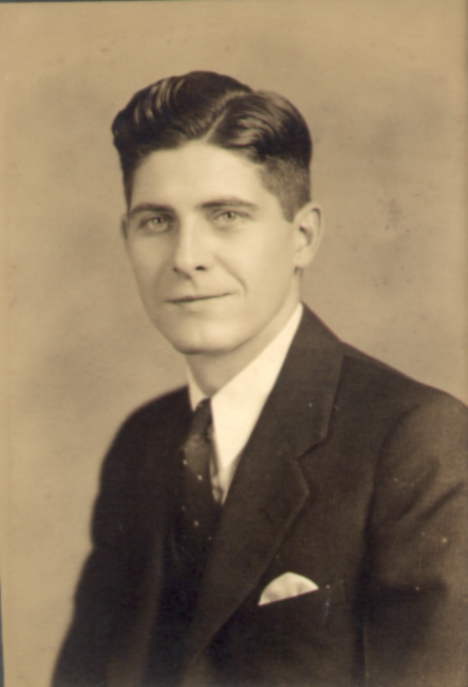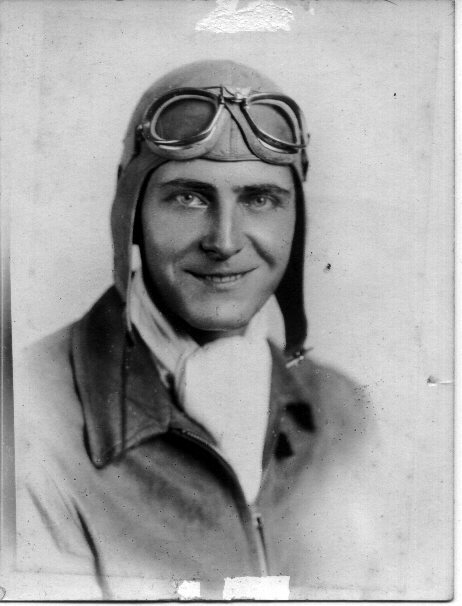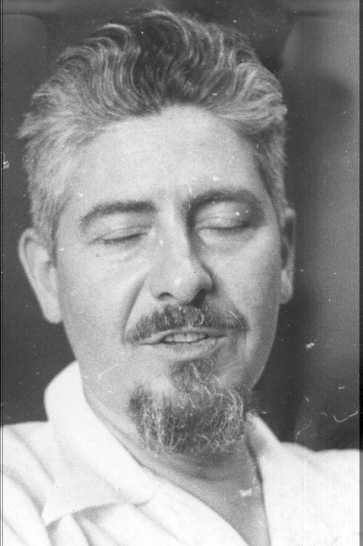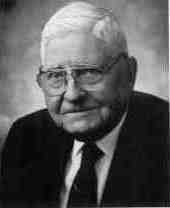GEORGE H
OWARD PHILLIPS

|
 |
George H. Phillips,
my dad, was born 21 JUL 1907 at Platteville, Grant, WI; reared in Osceola, Claremont, and
Brentford, SD and grew up much as any young boy of the time in a rural setting. He was baptized
in 1919 at The Brentford Congregational United Church of Christ where his mother played the organ
for the church. He attended public schools graduating from Brentford High School 21 MAY 1925 and
then enrolled at South Dakota State College in Brookings, SD. He graduated SDSC in 1929.
Upon graduation, he took a position as sports editor for The Mitchell Daily Republic, and in
1930 he joined the staff of the Estherville News of Estherville, Iowa, helping the paper convert
to a daily.
In 1932, he joined the U.S. Army Engineers for service in Hawaii, where he served until the
summer of 1933, when he was admitted to the Flying Cadets at Randolph Field.
He then returned to SDSC as a graduate assistant, receiving his masters degree in 1935.
|
|
George Phillips, 1936 |
George Phillips, 1940 |
 |
 |
| George as a Flying Cadet, 1933 |
George gets ready for "Hobo Day" |
There is a series (9) of letters and short notes from my grandfather, William Roswell Phillips, and grandmother, Alma Bushnell Phillips, to my dad while he was atttending college at SDSC. They are linked from the Site Map for simplicity. The "Back" link at the bottom of the "Site Map" page will return you to this page.
Read a transcription of a recording by George
telling stories of his youth.
Read a column by former student Terry Woster of The Sioux F
alls Argus-Leader.

The following is reproduced with the kind permission of Jack Getz, Professor, Department of
Journalism, South Dakota State University, Brookings, SD. Professor Getz tells dad's
professional story much better
than I ever could have.
From the PJ BULLETIN * SPECIAL EDITION * MAY 1990
by Jack Getz '64
George Howard Phillips was born at Platteville, Wis., on July 21, 1907, and died at Brookings,
S.D., on April 18, 1990. He was a friend.
But that epitaph says too little of the man. George Phillips is remembered by literally
thousands of people - family, students, parents, colleagues, deans, scholars, printers,
reporters, editors, publishers, broadcasters, advertising executives, acquaintances of every
sort. For many, he represented a wedge of life encompassing four years, more or less, on the
campus of South Dakota State University.
State College's Department of Printing and Rural Journalism found itself in a tight spot just
a month before the end of the 1948-49 school year. Its head, who had been on the job only since
the previous October, was gone. A search was mounted for a replacement. Arts and Sciences Dean
Frank G. Schultz eventually tapped Phillips, a 1929 alumnus then teaching and serving as acting
head of the journalism department at the University of Wichita in Kansas. He arrived during the
first quarter of the following school year.
Phillips was head of the department for 24 years, retiring in 1973.
During his tenure a new building housing the department was constructed; the position of
college editor (responsible for institutional public relations) was separated from the
department; majors in agricultural journalism and home economics
journalism were established; courses in broadcast journalism became part of the curriculum; the
number of students
enrolled in printing and journalism and the number of faculty members who taught them increased
dramatically; recognition by the Accrediting Council on Education in Journalism was
continuously maintained; a master's degree in journalism was introduced; and a graduate program
in printing management -- the only one of its kind anywhere -- was introduced.
The Printing and Journalism Building was completed in September 1951. It had been in the
planning and construction stages for years. With an increase in printing-journalism
enrollment following World War II and an expanding equipment inventory, the department had
outgrown its facilities in the basement of Old North. The South Dakota Press Association passed
a resolution in 1946 imploring the state to do something about the crowded conditions for
printing and journalism at State. It wasn't until nearly three years later that the Legislature
appropriated funds for the $250,000 building. Bids were let in December 1949. By that time
Phillips was firmly in command of the department. He watched over the construction, led
efforts to move equipment and offices into the new building and then, when the dust had begun
to settle, planned the dedication ceremony.
In 1956 Phillips lifted the department to the graduate level. Now students could earn a
Master of Science degree in journalism.
Two years later, the M.S. degree was made available in printing as well. The graduate program
in printing
management focused a national spotlight on South Dakota State. For many years it stood alone,
attracting students from all over the country. Writing about it more than 20 years later, Phillips
said he felt that "the old letter-press training which the printers were receiving was becoming
obsolete." He was looking ahead to the technological and educational changes he knew were
coming when, in 1958, he made printing management a graduate specialty as well as an undergraduate
course of study. After more than a decade of success, the program was weakened by
the establishment of a similar master's degree program at the Rochester Institute of Technology
and it was dropped in 1972. Ironically, the person in charge of Rochester's program was
an early graduate of South Dakota State's program under Phillips.
In his youth, Phillips had been one of the first students in what was known at the time (1925)
and for many years
thereafter as "PRJ" -- the printing and rural journalism program at South Dakota State. As an
undergraduate he was a charter member of the Printonian Club, editor of the Collegian and an
announcer for KFDY, the Cooperative Extension Service's 1,000-watt radio station.
Following his graduation in 1929, he worked as sports editor of the Mitchell Daily Republic.
Later he became managing editor of the Esterville, Iowa, Daily News, and helped convert it from
weekly to daily publication. Still later he was a writer for Railway and Marine News, a trade
publication based in Seattle, Wash. He returned to Brookings to earn a master's degree in
economics in 1935. On June 15 of that year he married Mildred Dunn of Flandreau. With his new
graduate degree, he entered higher education. He went first to Kansas State Teachers College in
Emporia, as journalism teacher and publicity director. Later he became a journalism teacher at
Wichita State.
He served in the armed forces twice -- as an enlisted man in the Army from 1932 to 1933 and as
an officer in the Air Force from 1943 to 1946. After Dean Schultz called him back to South Dakota
State in 1949, his duties were as numerous as they were diverse. Not only was he expected to teach, advise and administer the growing printing and journalism programs, but also to serve as college editor. In 1967 he was named director of communications, coordinating the efforts of the university's
director of information and the extension service's agricultural editor. He also administered the
secretarial science program and supervised summer workshops for high school newspaper and
yearbook editors and high school journalism teachers. He nevertheless found the time to earn a
doctorate in mass communications from the University of Iowa in 1962.
And he wrote. He was the author of articles published in Journalism Quarterly, South Dakota
History, Scholastic Editor, Quill and Scroll, the Emporia Gazette, the Kansas City Star,
the Christian Science Monitor, American Boy magazine and others.
Phillips was inducted into the South Dakota Newspaper Hall of Fame in 1989. He was given the
Department's Distinguished Alumnus Award in 1987. The South Dakota Newspaper Association
presented him posthumously its Outstanding Service Award this spring.
When Phillips retired in 1973, he was named emeritus professor of journalism. He and Millie
moved to Bella Vista, Ar, but maintained friendships in South Dakota. They
moved back to Brookings in 1988.




